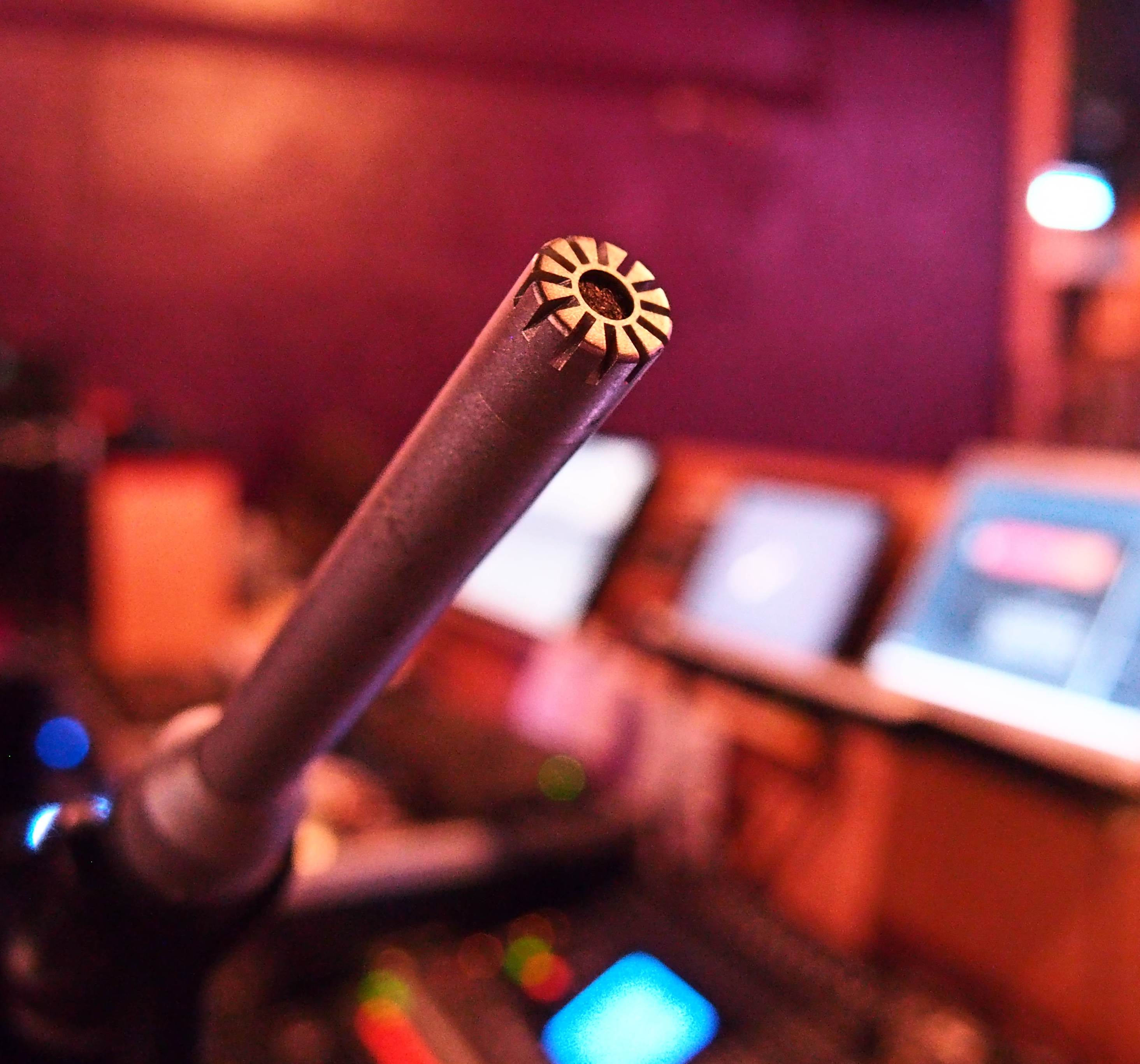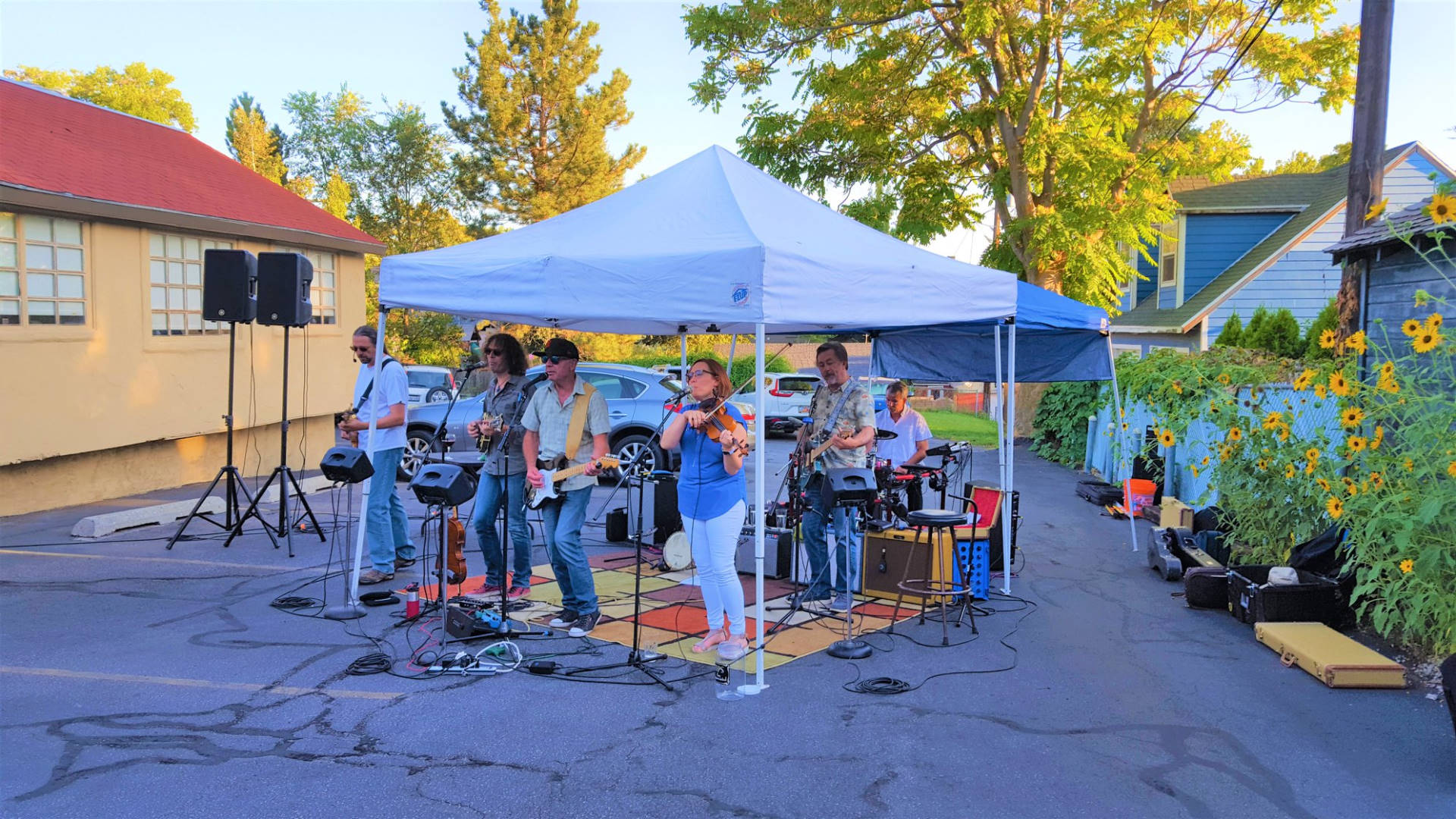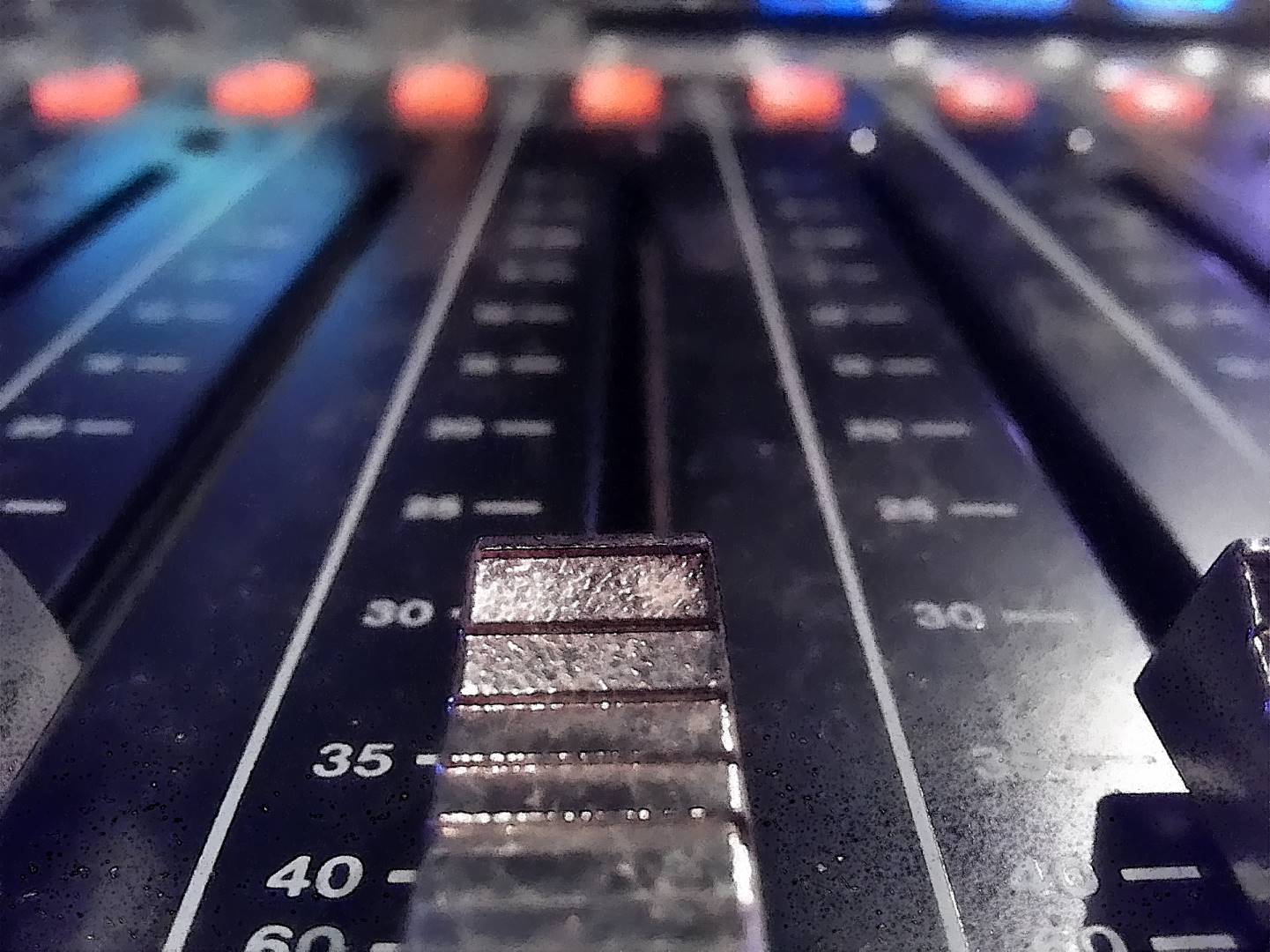From ears to computers and back again.
Please Remember:
The opinions expressed are mine only. These opinions do not necessarily reflect anybody else’s opinions. I do not own, operate, manage, or represent any band, venue, or company that I talk about, unless explicitly noted.

 Want to use this image for something else? Great! Click it for the link to a high-res or resolution-independent version.
Want to use this image for something else? Great! Click it for the link to a high-res or resolution-independent version.
I was recently asked specifically to write about how I measure and tune audio systems. I was tickled; Having topics suggested to me is something I dearly love. Here you go, then…an article about how I figure out what’s going on with a PA system, and the tools involved.
I’m going to set this against a “background” of a composite case study: Deploying a monitor system, FOH PA, and delays for the IAMA Bluegrass Night at Gallivan Plaza. I’ve done two iterations of the full setup now, handled slightly different ways, and have had success at it both times. Yes, I’m aware of the irony that Gallivan Plaza is definitely not a small venue. I may need to change the name of this site at some point. Well, anyway…
I Start With My Ears
When everything is placed, powered, and attached to signal, it’s time to get out a pink noise generator and do some listening. I’m fortunate in that my preferred consoles (Behringer/ Midas X/M 32s of various configurations) have noise generators built in. The point of this step is twofold.
- Confirm that everything is working and getting signal.
- Find out if anything is glaringly, obviously out of spec or set incorrectly.
If everything is passing noise, the polarity of the subwoofers seems right at one setting or another, and all boxes of the same model sound essentially the same, it’s time to move on. I don’t spend a lot of time on this step. There is no “agonizing” here. If something is clearly broken, mispatched, level-trimmed incorrectly, or significantly different in transfer-function than it ought to be, I act on it. If it doesn’t grab my attention immediately, it’s fine.
I want to note right here that many of the middle steps I’m about to discuss are often skipped. The Gallivan show is one where I have the time, support, and necessity to do more intensive measurement. On many other shows, instrument-aided analysis doesn’t make it onto the priorities list. That might seem a shame, and it might be to some extent, but it also highlights just how much mileage you get out of strong basics. Especially now, in the days of ultra-engineered loudspeakers, a simple check for correct function and level goes a long way.
Two Methods For System-To-System Time Alignment
I generally don’t worry about bandpass-level time alignments, especially when they involve boxes that are offset to the left or right of each other. For example, getting the full-range FOH speakers to line up exactly with the center-clustered subwoofers at some chosen point is more work than it’s worth in my case. Alignment that’s (effectively) along the horizontal axis is a situation where correction at one point is likely to be hugely UN-correct at many other points.
Delays are a different story. Alignment of whole, full range systems along the depth axis is much more effective. When you’re correcting for a distance that’s largely described by walking away from the main system, on axis, your chosen solution will be much more stable – that is, relevant and correct – for more audience members. (It still won’t be perfect, though, but that’s life.)
Because I don’t have a dual-FFT measurement system with a delay finder, I have two methods for measuring propagation time.
Two Mics And A DAW
The first method is to set a microphone right up against a main PA loudspeaker. Then, another microphone is set at the point that the solution is going to be tuned to. I recommend moving the second point off the delay speaker’s location horizontally, so that you’re midway between center stage and the audience’s outside edge. This is because, statistically, more people will be close to that horizontal location than dead center or to the far outside.
You then record both microphones into an audio workstation, like Reaper, on separate channels. While the recording is running, you play a single click or other, similar sound through the main speaker you’re using for reference. You do NOT play the click through the delay. Remember: You want to find the time that it takes that single click from the main to arrive. The click has to be loud enough at the delay point to be clearly distinguishable from ambient noise, so keep that in mind when setting levels.
At some time, the impulse will arrive at the first microphone. At time+delay, that same click will arrive at the solution-point microphone. If you get into your recording and measure the time between the click arrivals, you get your delay setting.
Those Two Funny Things On The Side Of Your Head
This method is significantly less accurate than a two-mic measurement, but it can be okay in a pinch. Remote control of your system is very helpful when trying this.
For the measurement, set the delay speaker to have an apparent level that’s very similar to the level of the main PA at the solution point. Now, stand at your desired solution point, and play a click through BOTH the main PA and delay speaker. (Use only one “side” of the PA if you can.) It will probably help to plug one ear, or at least turn so that one ear is pointed toward the overall sound system. You should clearly hear multiple arrivals. Adjust the delay time to the delay speaker slowly, listening for when the two arrivals seem to merge into one. Now, play some music or noise through both the main PA and the delays, listening for comb-filtering effects at your solution point. Adjust the delay until you get the least-objectionable result possible. Finally, restore the delay speaker to full level.
*****
Sidenote: My current methodology with delays is for them to be significantly louder than the main system when you’re standing close to them, so as to mitigate comb-filtering problems. If the signal that’s misaligned is relatively low in level, like 15 dB down or an even lesser magnitude, its summation effects are greatly reduced.
Meddling In The Affairs Of Wizards (Possibly With An Omnimic)
As I mentioned before, I don’t have a dual-FFT measurement system available. This doesn’t bother me very much; I’ve come to prefer single-ended measurement tools. They do have limitations, in that they require a known measurement stimulus signal to operate and thus aren’t good for “real time” readings, but they can still tell you a great deal about your system’s initial state. They’re also less fiddly in certain ways, like not being affected by propagation delay to the measurement mic.
I’ve used both the Dayton Omnimic system and Room EQ Wizard, and I’ve come to like REW’s more contemplative, “measure, tweak, measure again” workflow over Dayton’s “measure and tweak while annoying signals are running and the magnitude graph is bouncing around.”
The specifics of each system are beyond the scope of this article, but I will make some generalizations:
- Make sure your measurement signal is loud enough to swamp ambient noise, but not so loud that everyone around hates you. Sine sweeps have better signal-to-noise performance overall, because at any given instant the signal is a single frequency at a certain SPL, rather than all audio frequencies forming a total SPL.
- A basically okay measurement mic is just fine. I have a Behringer that I got for something like $50, and it’s survived occasional bouts of nonsense (like gravity plus a hard floor) while still delivering results that I can use meaningfully.
- Put the mic where your head is going to go.
- I generally don’t average a bunch of measurements. Mostly, I try to pick a point that represents my average audience member decently, and capture that for tuning. It’s important, though, to keep in mind that your tuning will deflect at physical points that aren’t where your mic was.
- Smooth your traces so that you can read them, but not so much that they lie like the people who were trying to sell me beachfront property in Topeka. I recommend 6dB per octave smoothing to start.
- Don’t chase every peak and dip. Look for trends and major deviations.
- Try to find a “hinge frequency” that represents the center of overall magnitude, such that overall boosts and overall cuts balance out. Be especially resistant to boosts that seem very large relative to any cuts you might make.
- Go for flat response in a reasonable passband for the boxes and application. Don’t boost anything to your subwoofers below about 45 Hz, or even better, don’t boost anything. If you find an egregious sub peak, cut it and leave everything else alone. A regular ol’ monitor wedge can often start rolling off around 75 Hz without anybody being upset about it.
- Measure after you tune whenever possible. If something in the trace doesn’t seem to be responding, that’s almost certainly to do with acoustics or time, and your EQ alone will not fix it. If a tweak doesn’t produce a meaningful response, free up that EQ band.
I End With My Ears
The final analysis goes right back to my hearing. This is also why tablet-driven mixing is so helpful. I can walk out to a monitor, or the main PA, or the delay system, and hear it while I make my last few decisions. Does my tuning make any sense in real life? Do the mains kill me when I’m up close? These are questions that are answered by listening. Also, for every practical purpose I’ve stopped doing any real tuning with music. I do use music for a basic reference point on listenability, but what I really want to know is how a vocal mic sounds through the boxes. If a vocal mic sounds terrible in FOH or monitor world…surprise! It sounds terrible, and no amount of “the trace looked right” can defend that. Be concerned about your reinforcement inputs, not your break music.

 Want to use this image for something else? Great! Click it for the link to a high-res or resolution-independent version.
Want to use this image for something else? Great! Click it for the link to a high-res or resolution-independent version.







